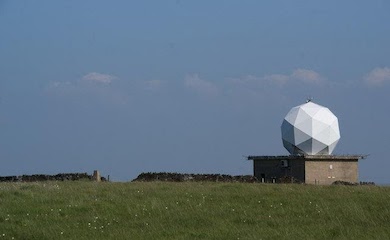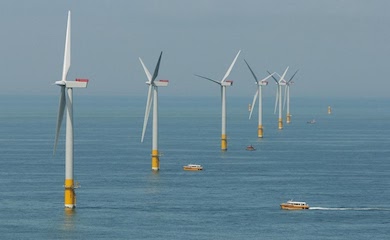Background
Tall buildings and wind turbines cause radar interference with radar assessments predicting their likely impact and showing whether they can be built. Radars transmit and receive radio signals which are processed electronically to show returns on the radar display.
Radar Interference
Buildings and wind turbines can block or reflect radio signals which means they can cause radar interference – making genuine returns or false returns appear. Affected radar types can include: (a) Air traffic control radar; (b) Air defence radar; (c) Marine radar and (d) Meteorological radar.

Figure 1 The now defunct H23 radar at London Heathrow
Radar Assessments – Five Steps
Radar assessments typically have five steps:
- Determine whether the development will have any technical effect on the radar
- Predict the likely effect (if any) on radar displays
- Study the operating environment in the region of any effects
- Determine whether there will be any significant operational impact
- Identify and propose mitigation solutions if required
Technical Impact
Step one is normally achieved by determining whether a line of sight exists between the radar antenna and the top of the proposed structure with calculations accounting for the terrain height profile, Earth curvature and refraction. Refraction occurs because air becomes denser close to the earth’s surface and causes a downward bending effect which enables radar to “see” over the horizon. The terrain height profile is built by interpolating Digital Terrain Model (DTM) data. This process results in a radar line of sight chart being produced. This chart is examined to determine whether the structure could have a technical effect on the radar.
In some situations there can be doubt due to diffraction effects which causes weak radio signals to bend around physical obstructions. Additional calculations, such as a radar detectability calculation, may be required to account for diffraction.
Once a technical effect is expected its likely impact on radar displays can be predicted. The likely display effect depends on a number of factors including: (a) radar type; (b) structure type; (c) structure size; (d) amount of structure visible to radar; (e) distance between radar and structure; (f) interconnections between the radar and the display system and (g) how the radar data is processed.
Operational Assessment
The operational assessment involves considering the environment in the vicinity of any expected technical impact. For example false returns on a marine radar are going to have a greater impact over a busy shipping lane than they would on land away from the seafront. Often the acceptability of a radar impact is subjective – and sometimes mitigation will be required.
Mitigation
Mitigation solutions can be operational or technical where operational mitigation might involve changing procedures or charts and technical mitigation could involve reconfiguring the radar or redesigning the proposed structure.
Pager Power
Pager Power’s first radar assessment was for Prestwick Airport, Scotland in 2002. To date it has undertaken over one thousand radar impact assessments in the United Kingdom, Ireland, South Africa, France, Sweden, Oman, Bulgaria, Greece, Belgium, Ghana, Serbia, Finland, Netherlands and Singapore. If you require a radar assessment please call or email or find out more by clicking here.
Wind Farm Guidance
There is a lot of guidance on the wind farm radar issue. The best published documents to get you started include:
United Kingdom, Civil Aviation Authority, CAP 764, Policy and Guidelines on Wind Turbines
United States, Department of Defense, The Effect of Windmill Farms on Military Readiness, 2006
Image accreditation: https://upload.wikimedia.org/wikipedia/commons/3/35/British_Airways_Boeing_777-236ER%3B_G-VIIG%40LHR%3B05.06.2010_576bi_%284688303011%29.jpg



